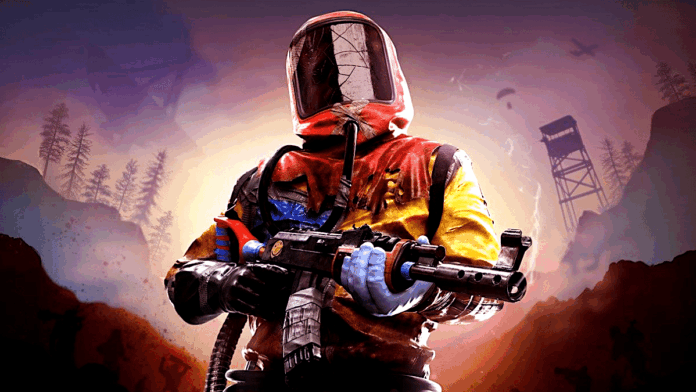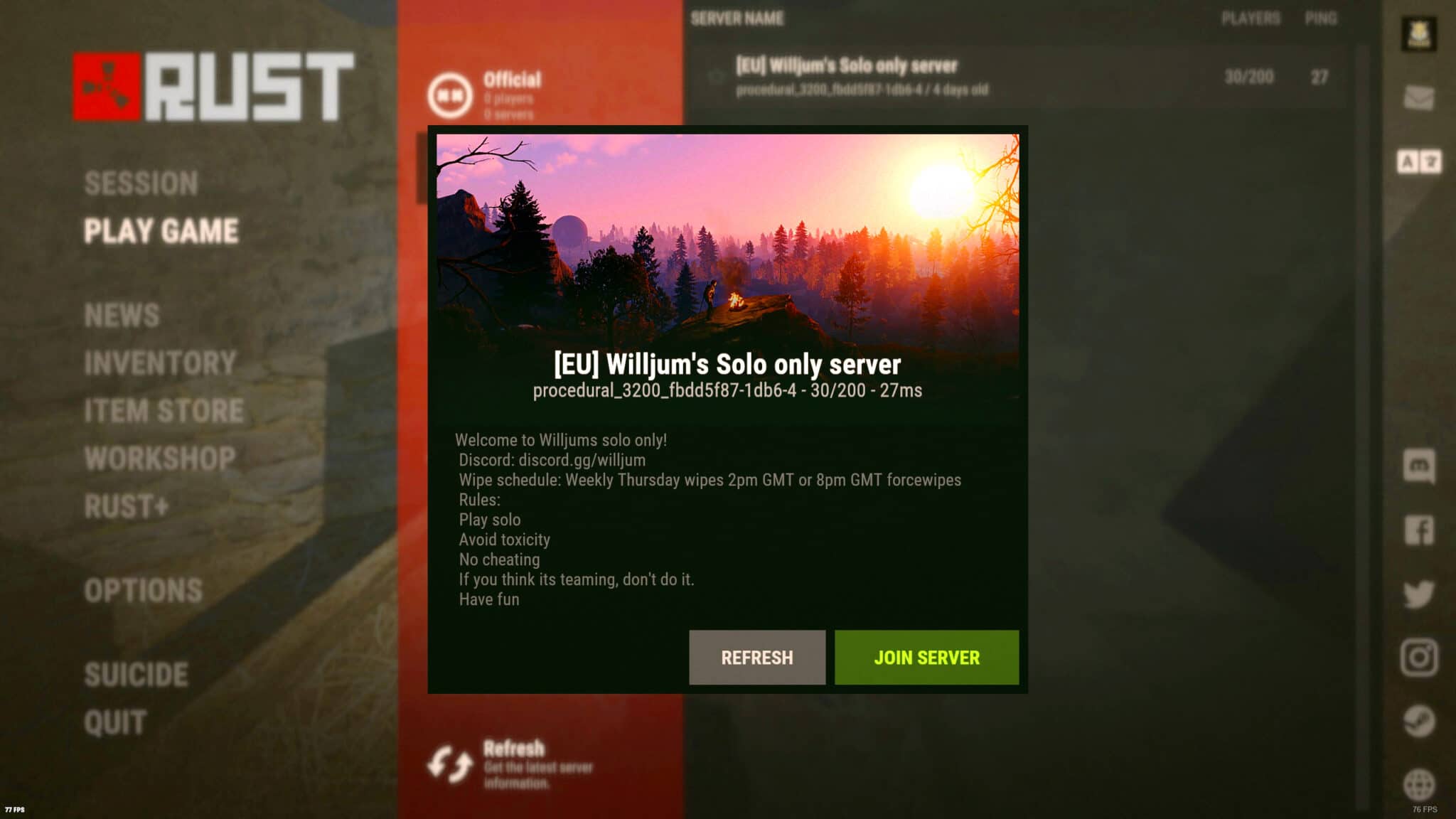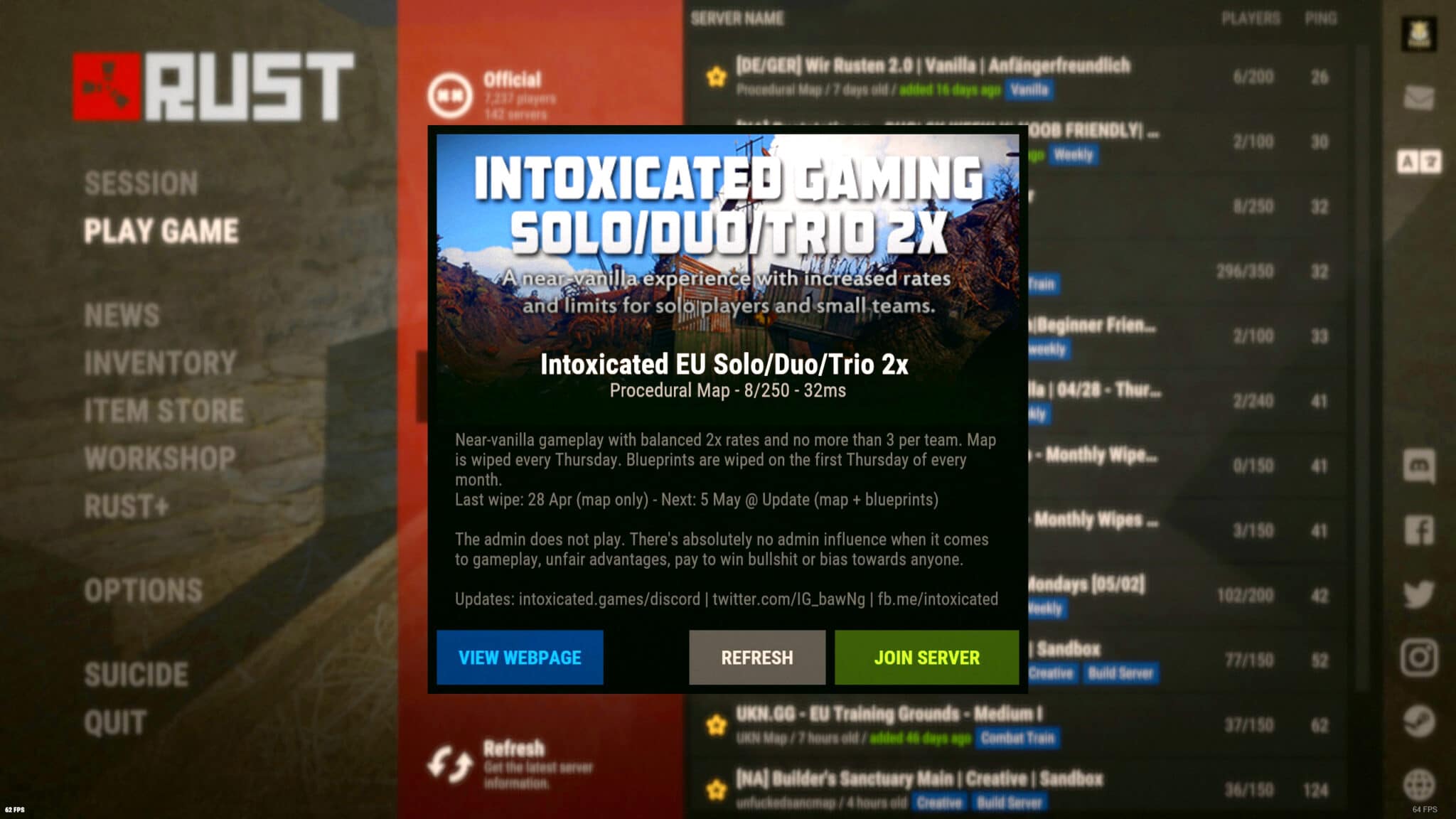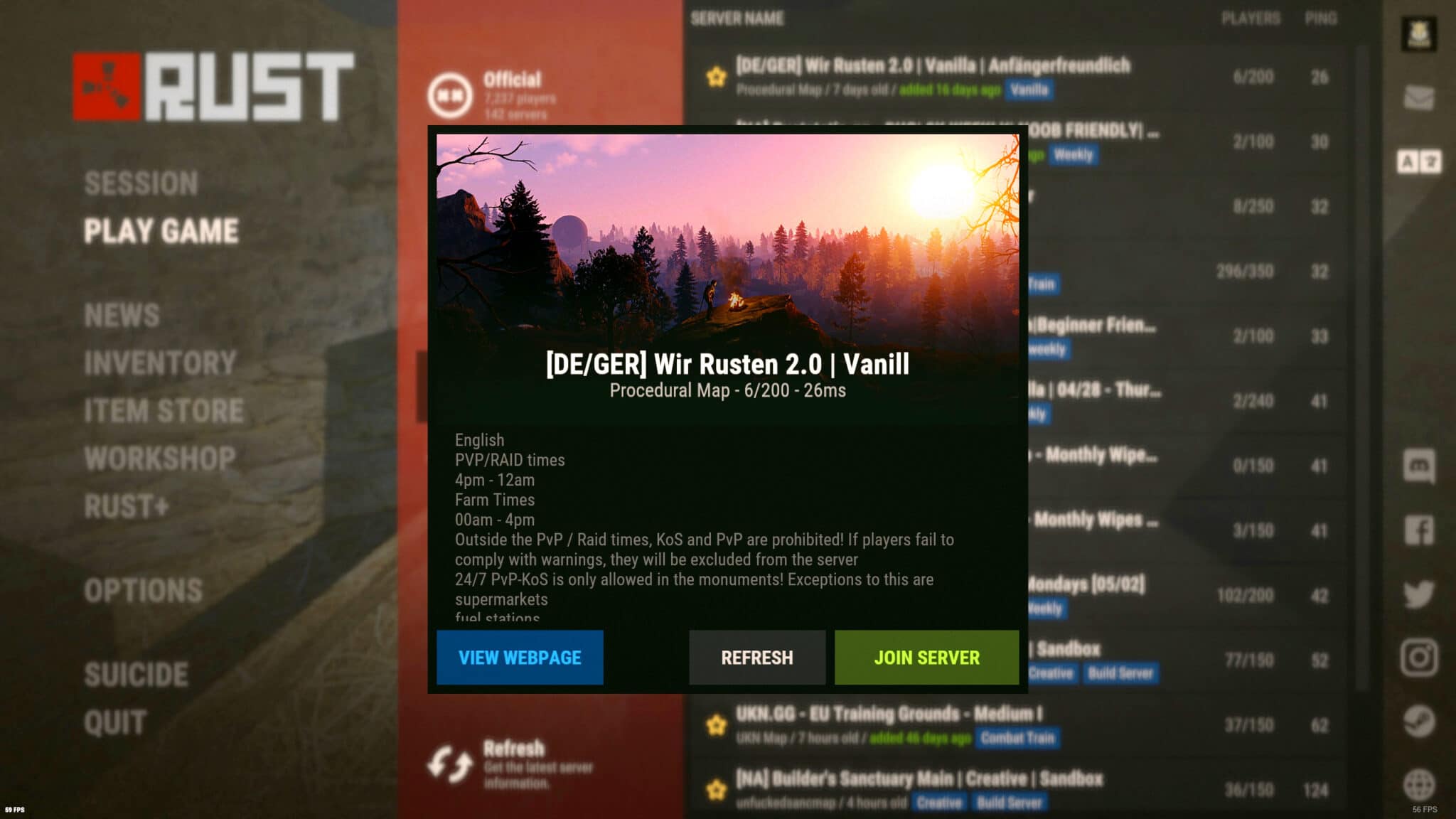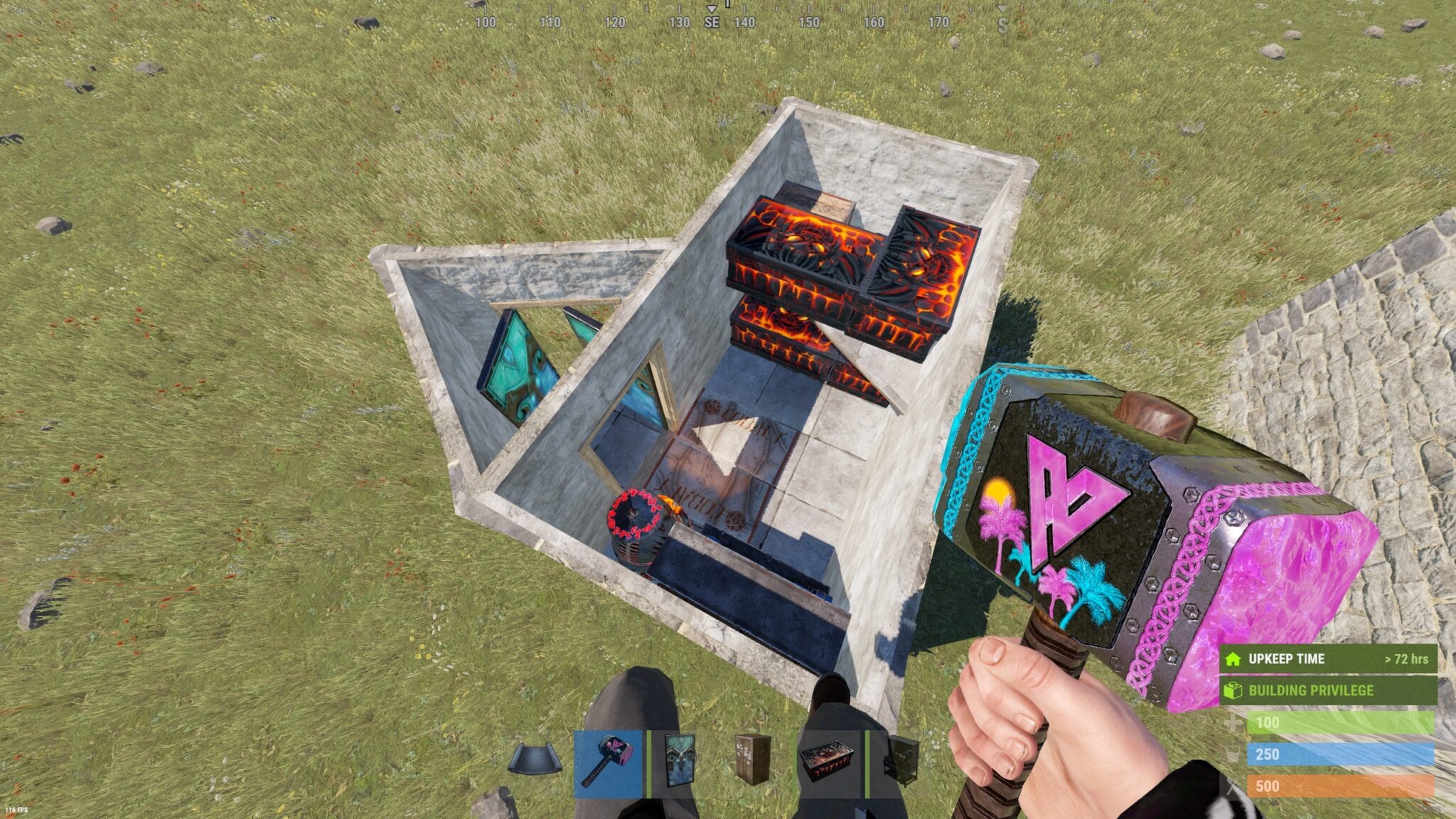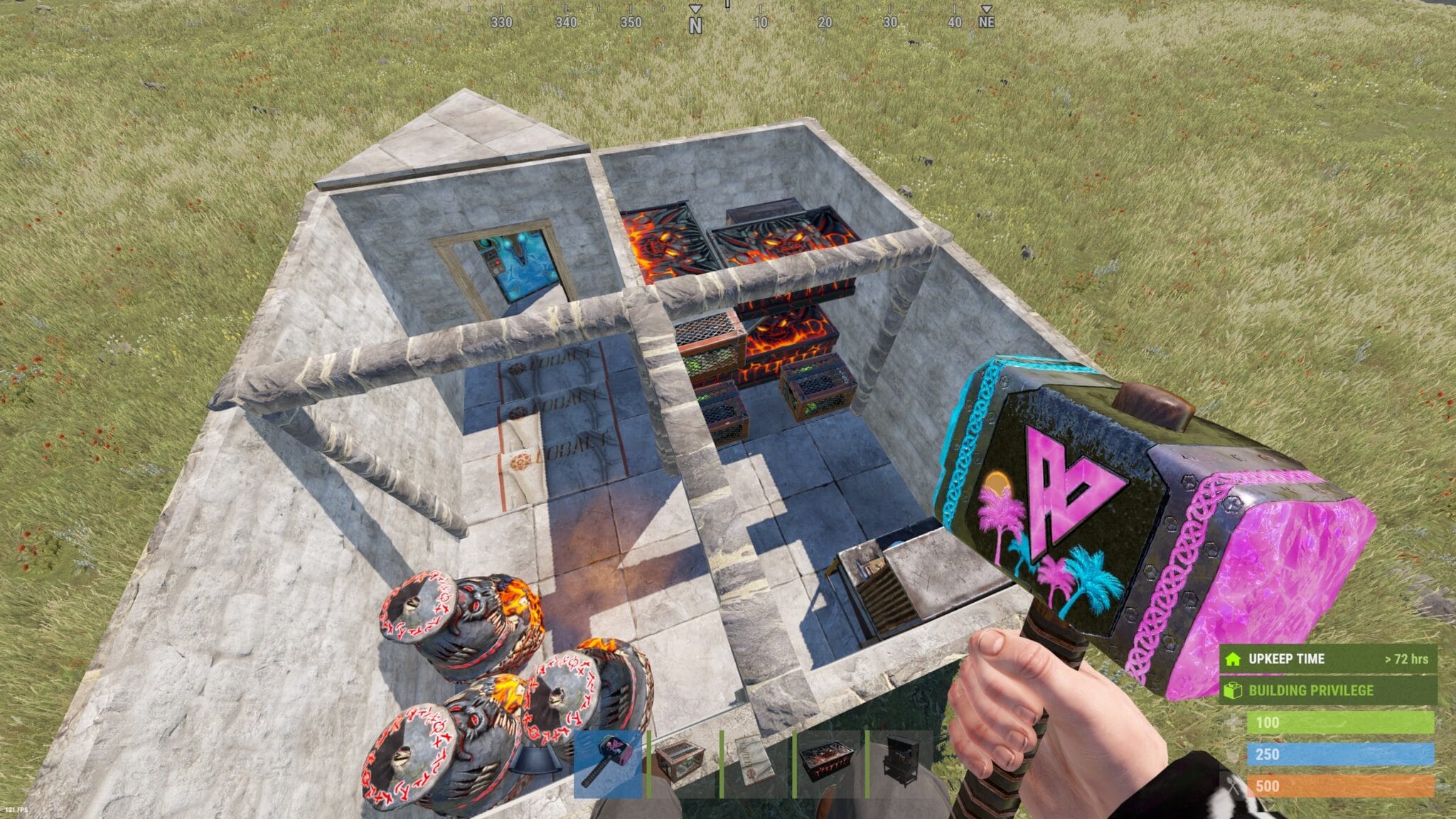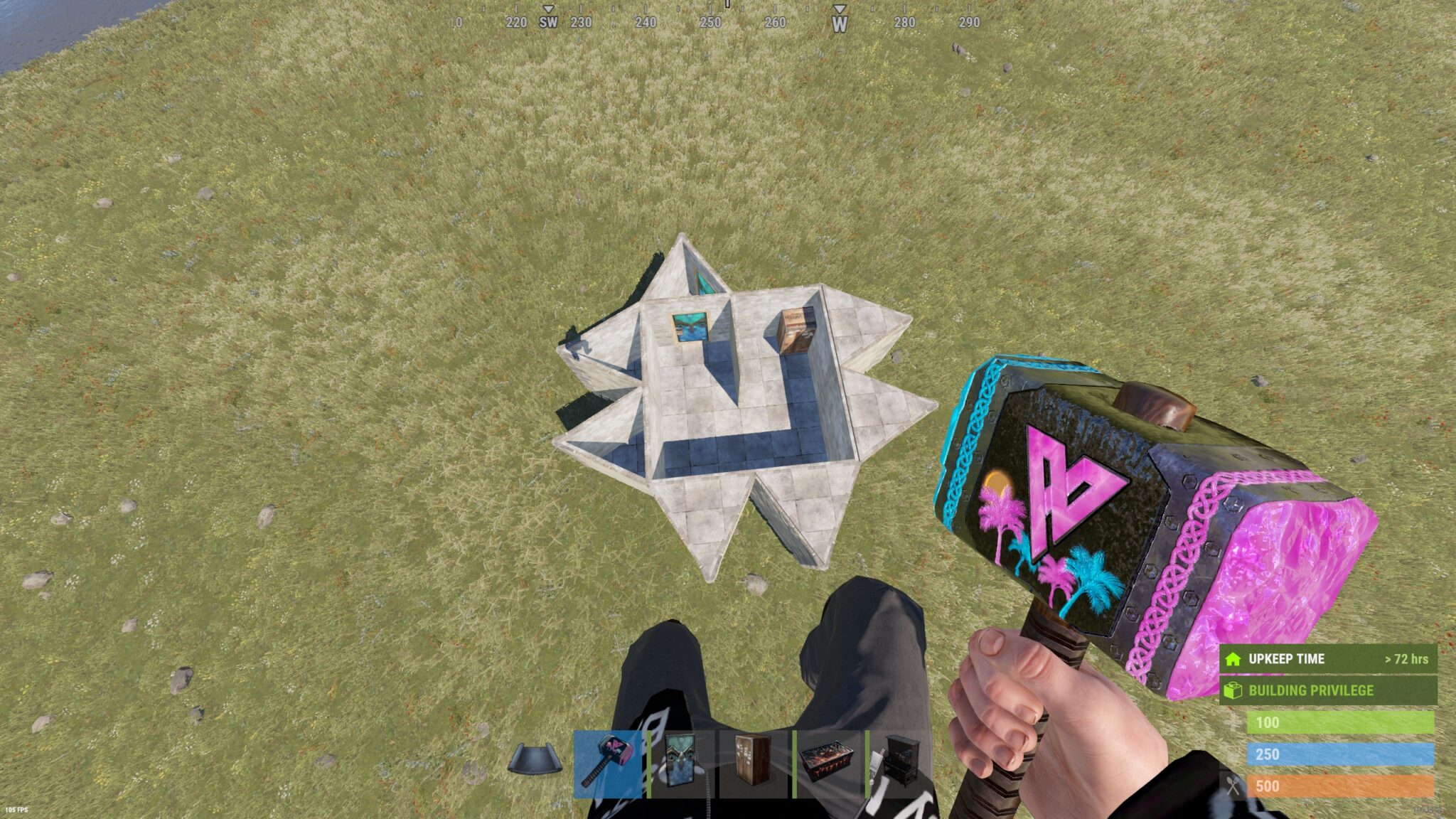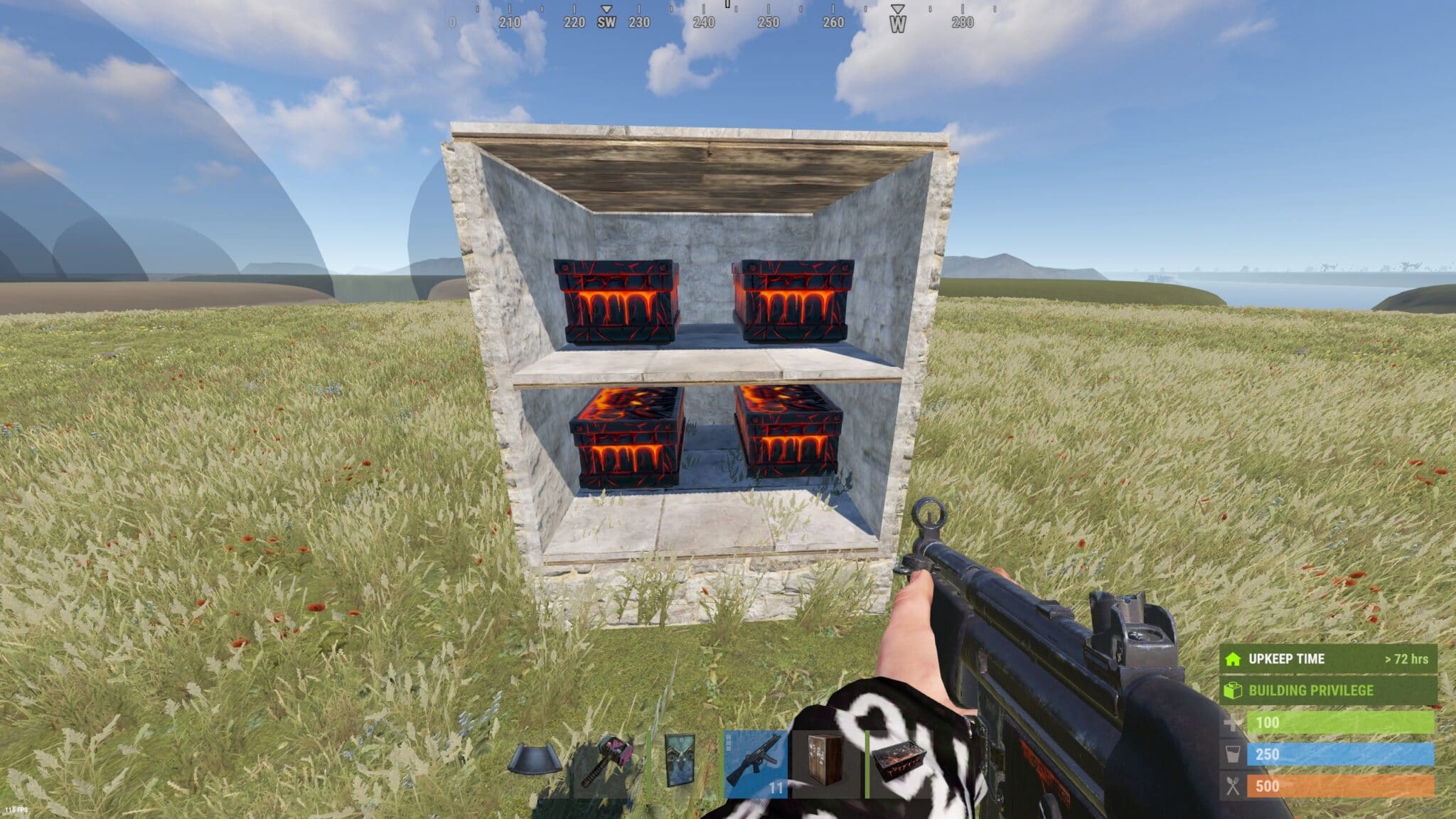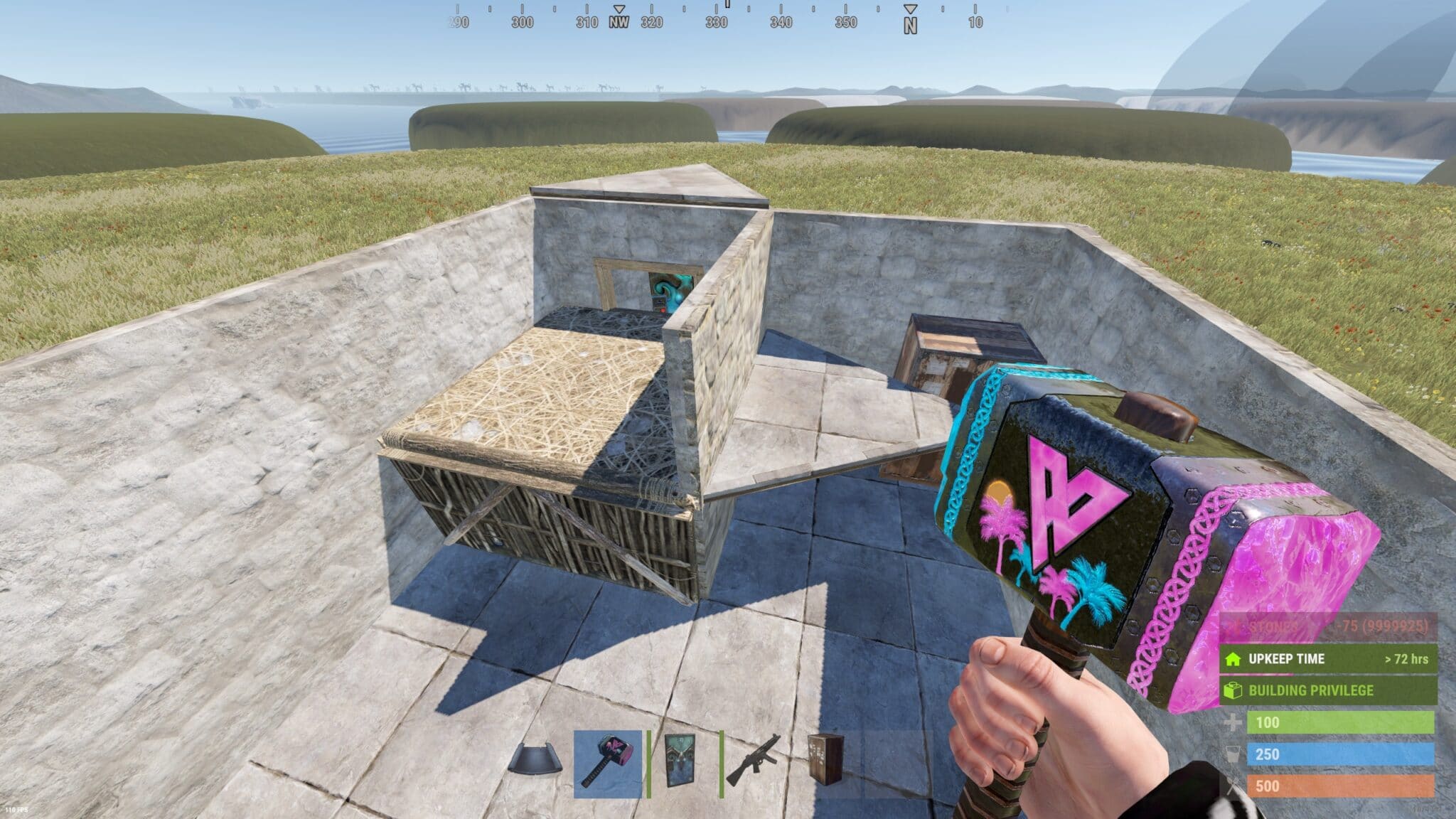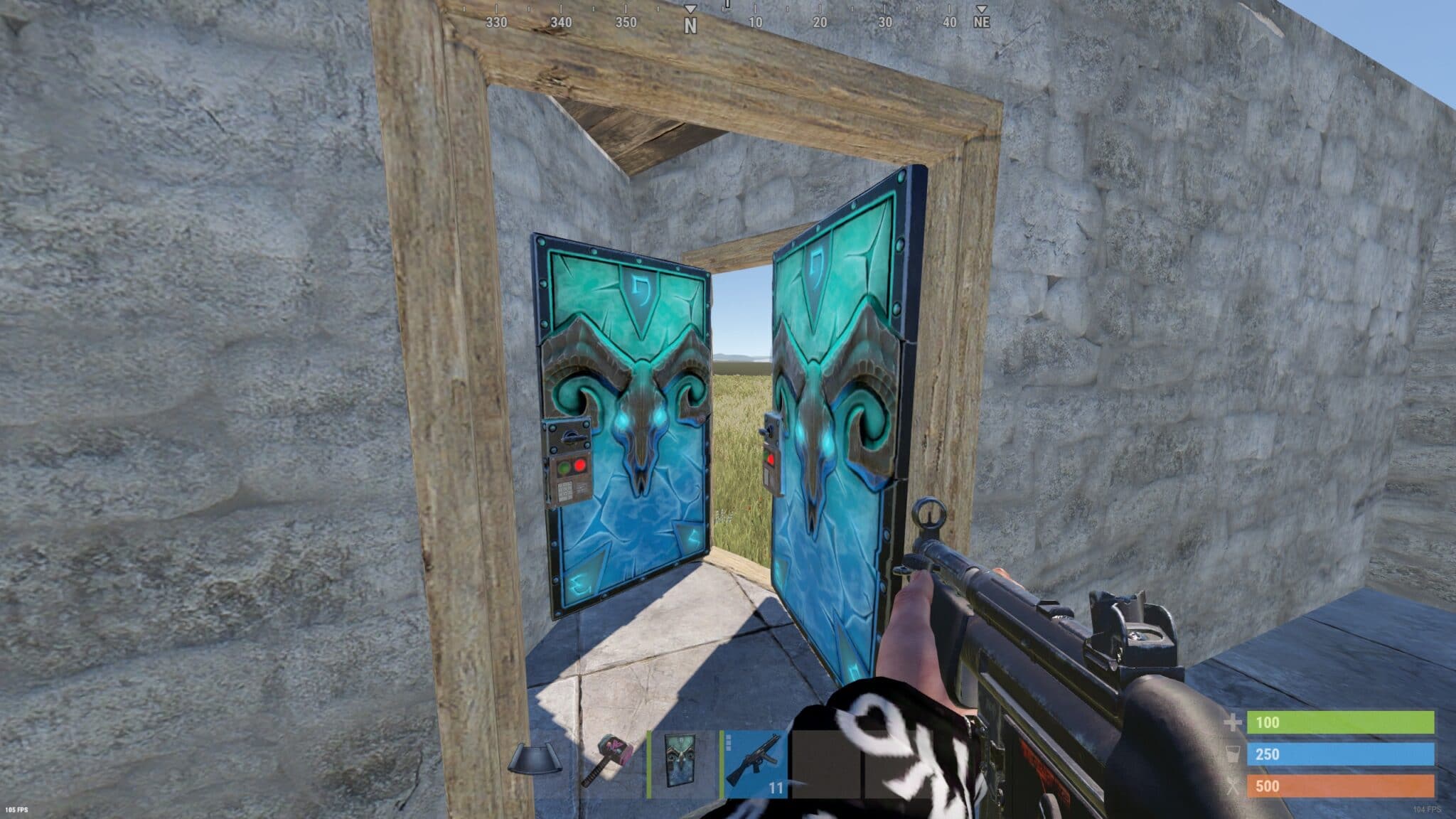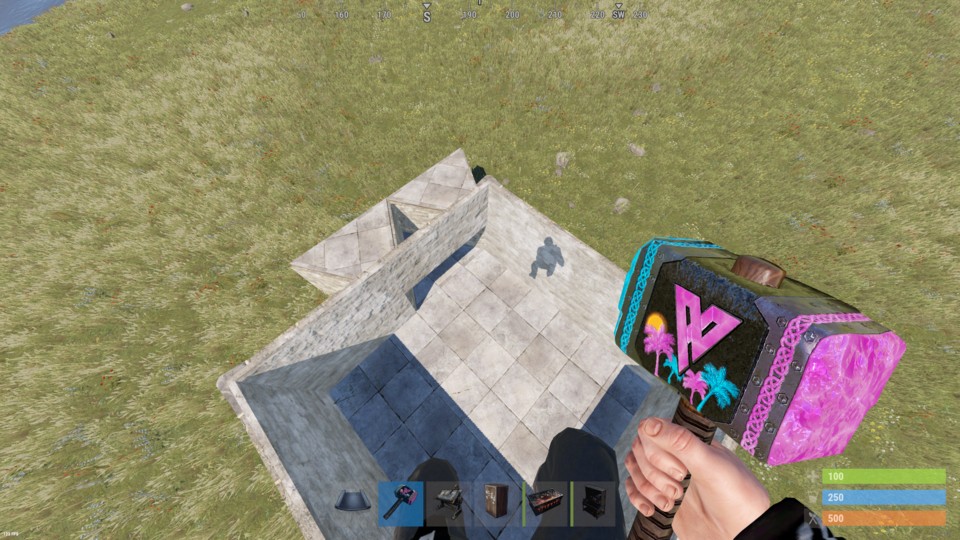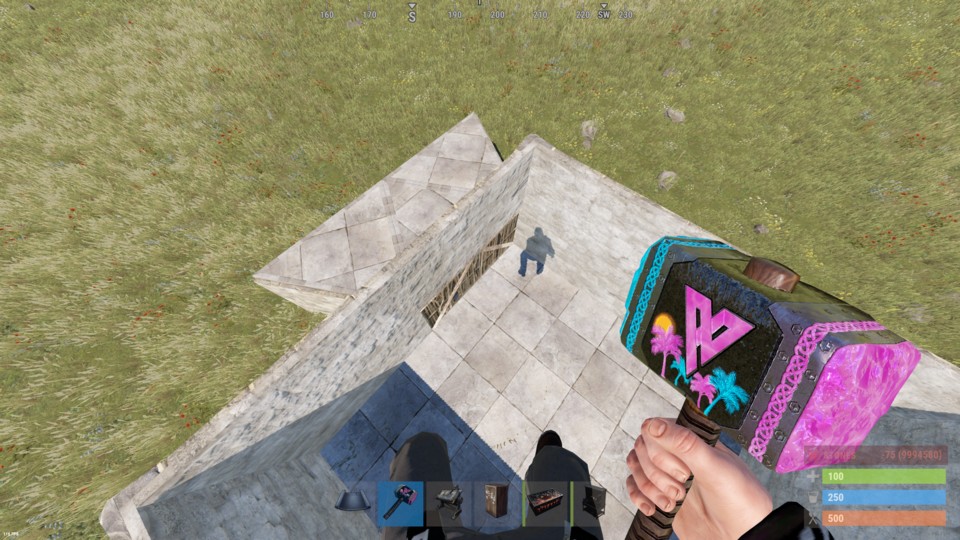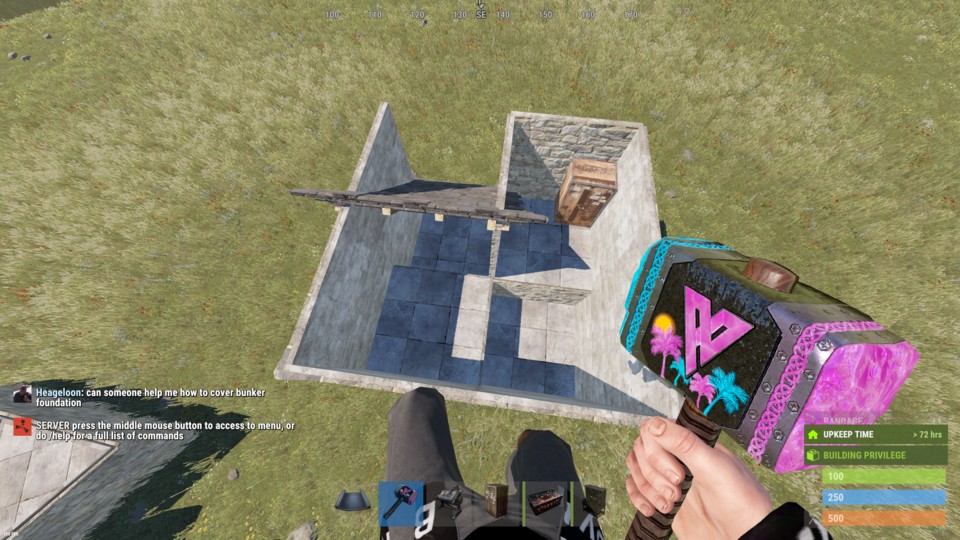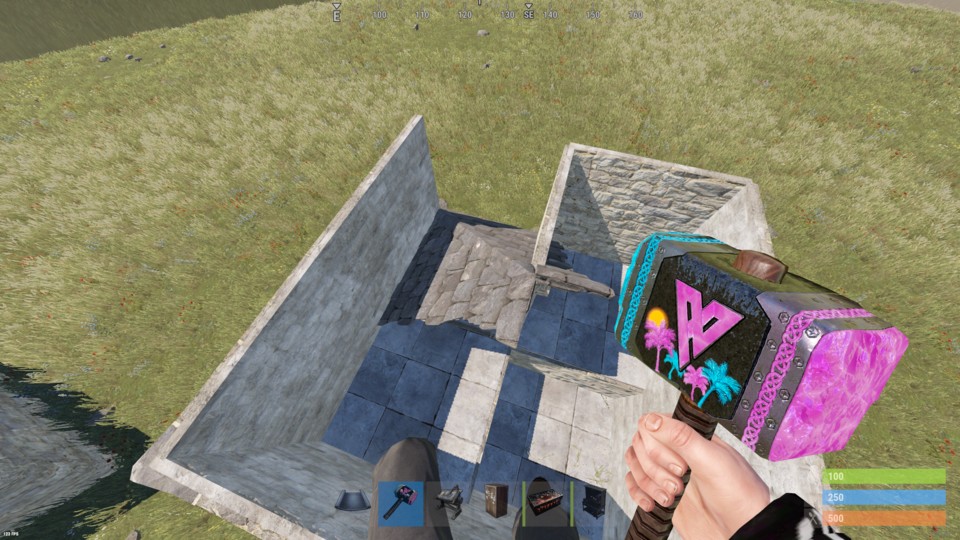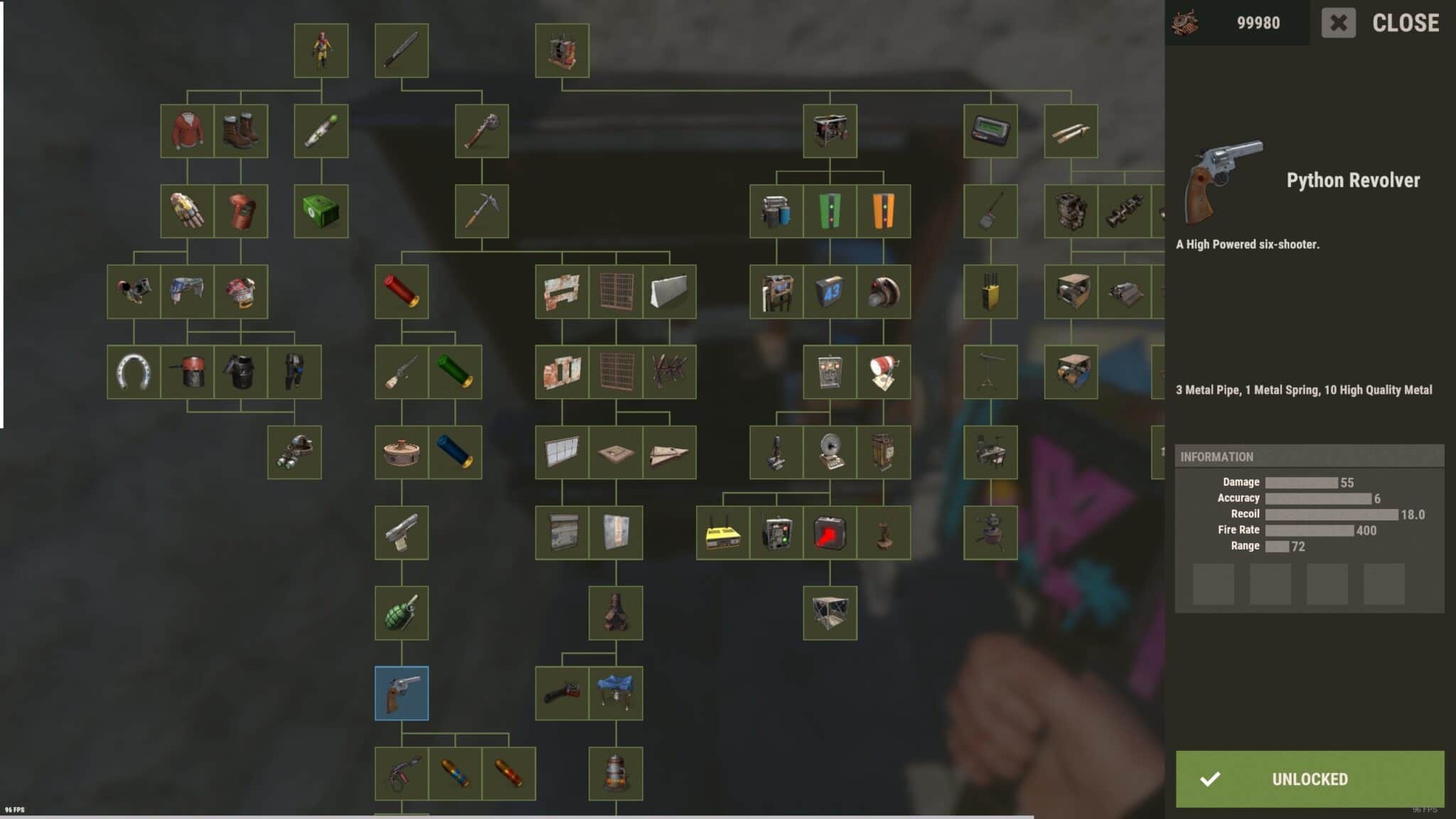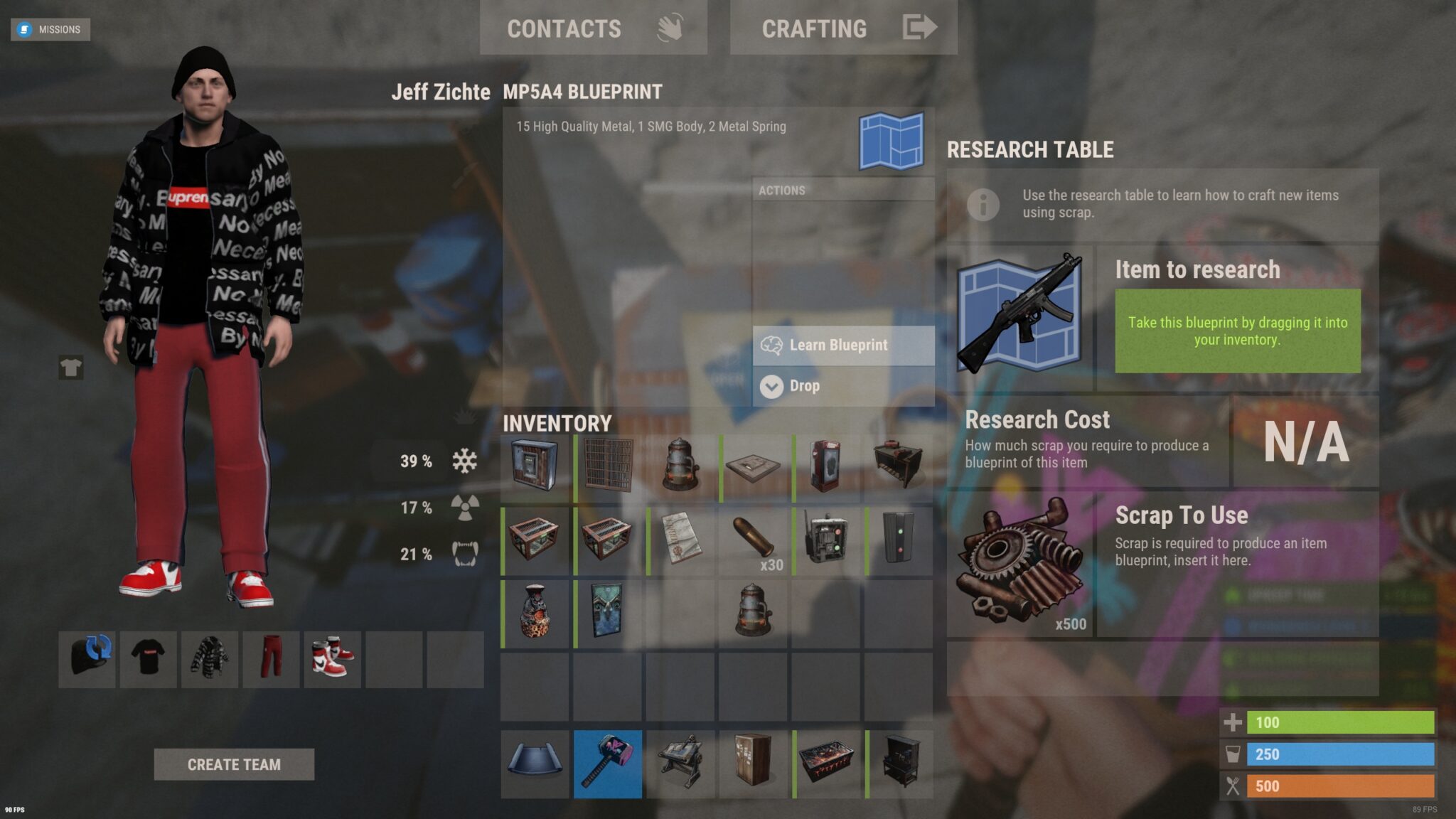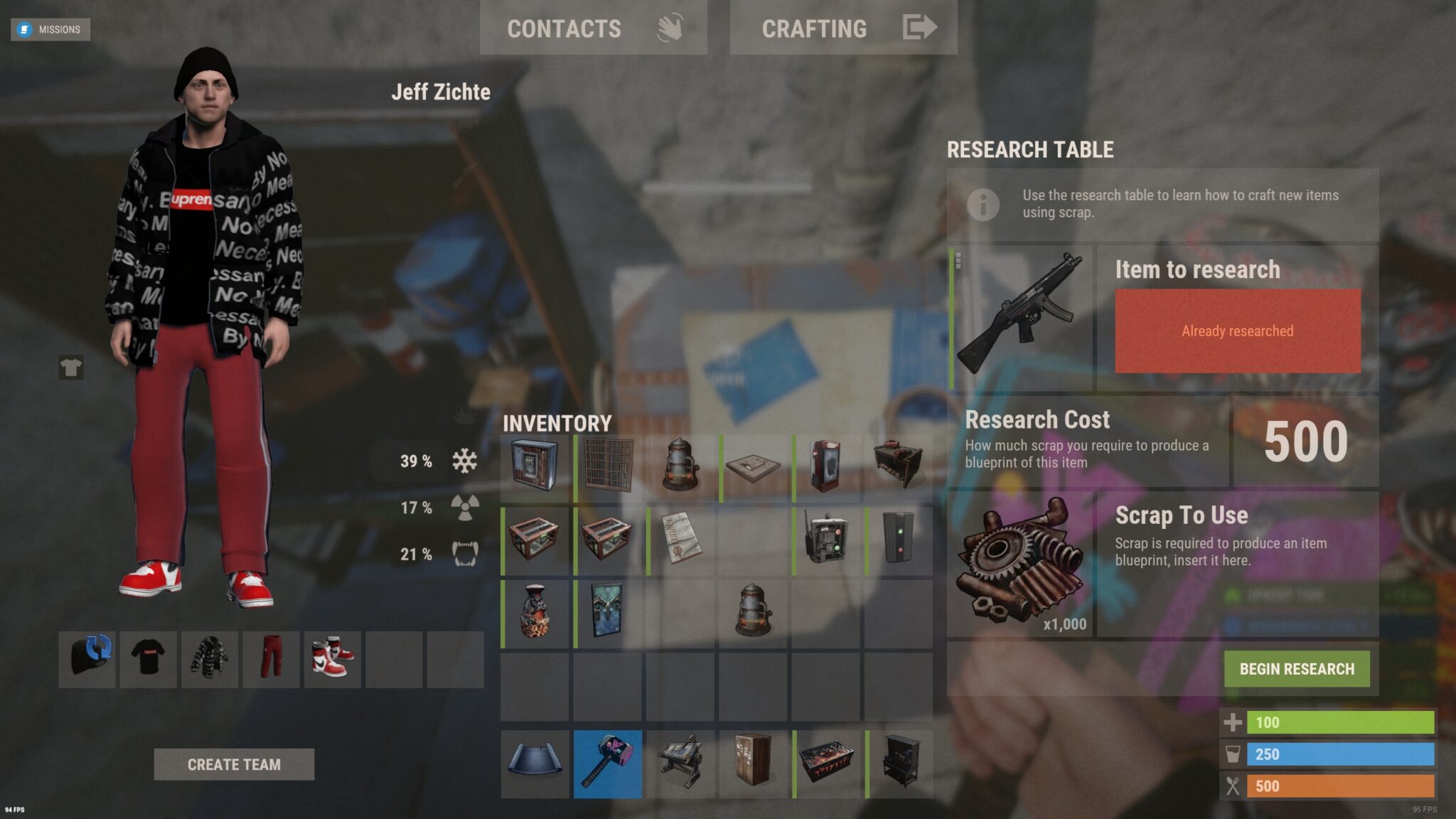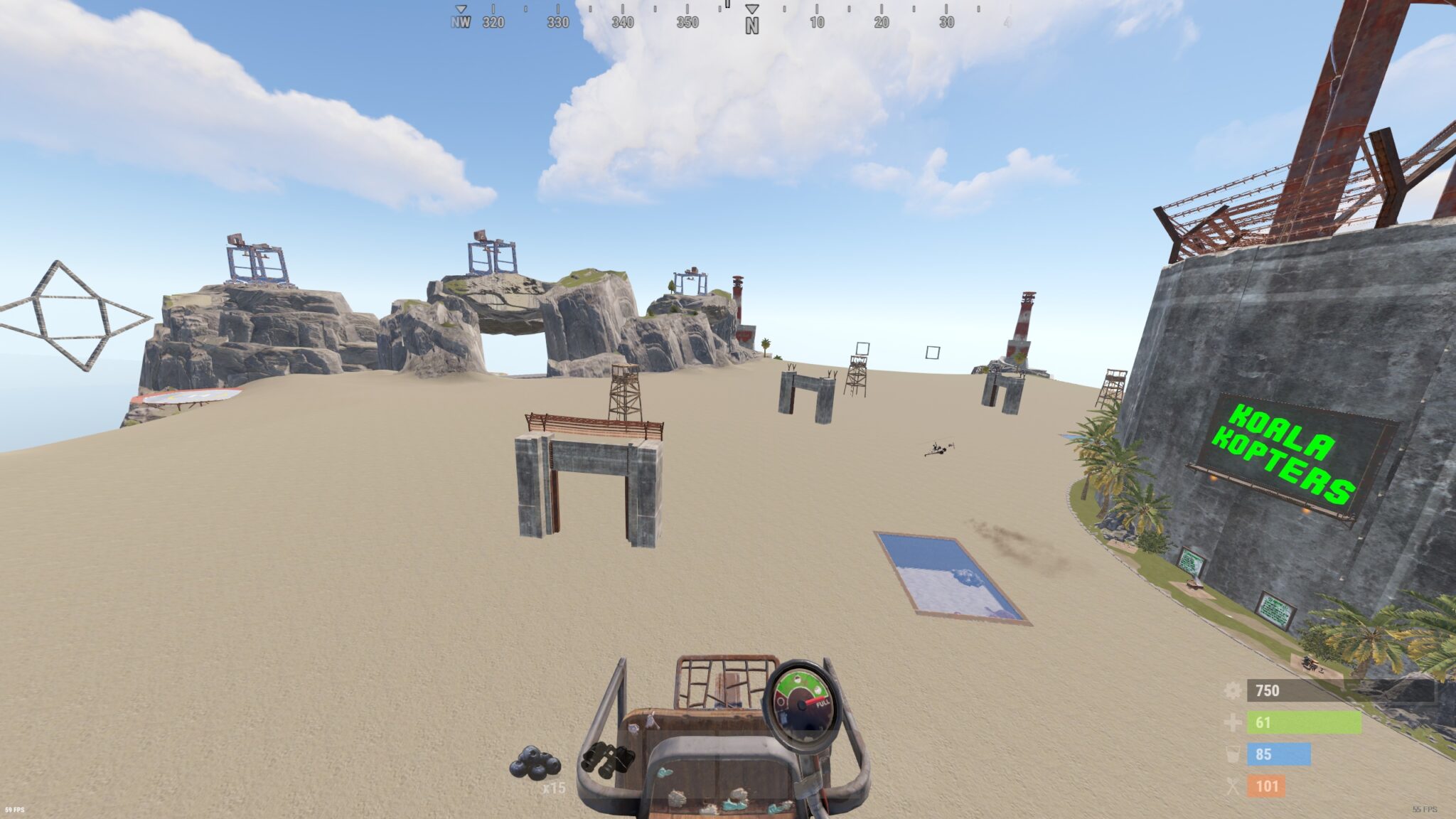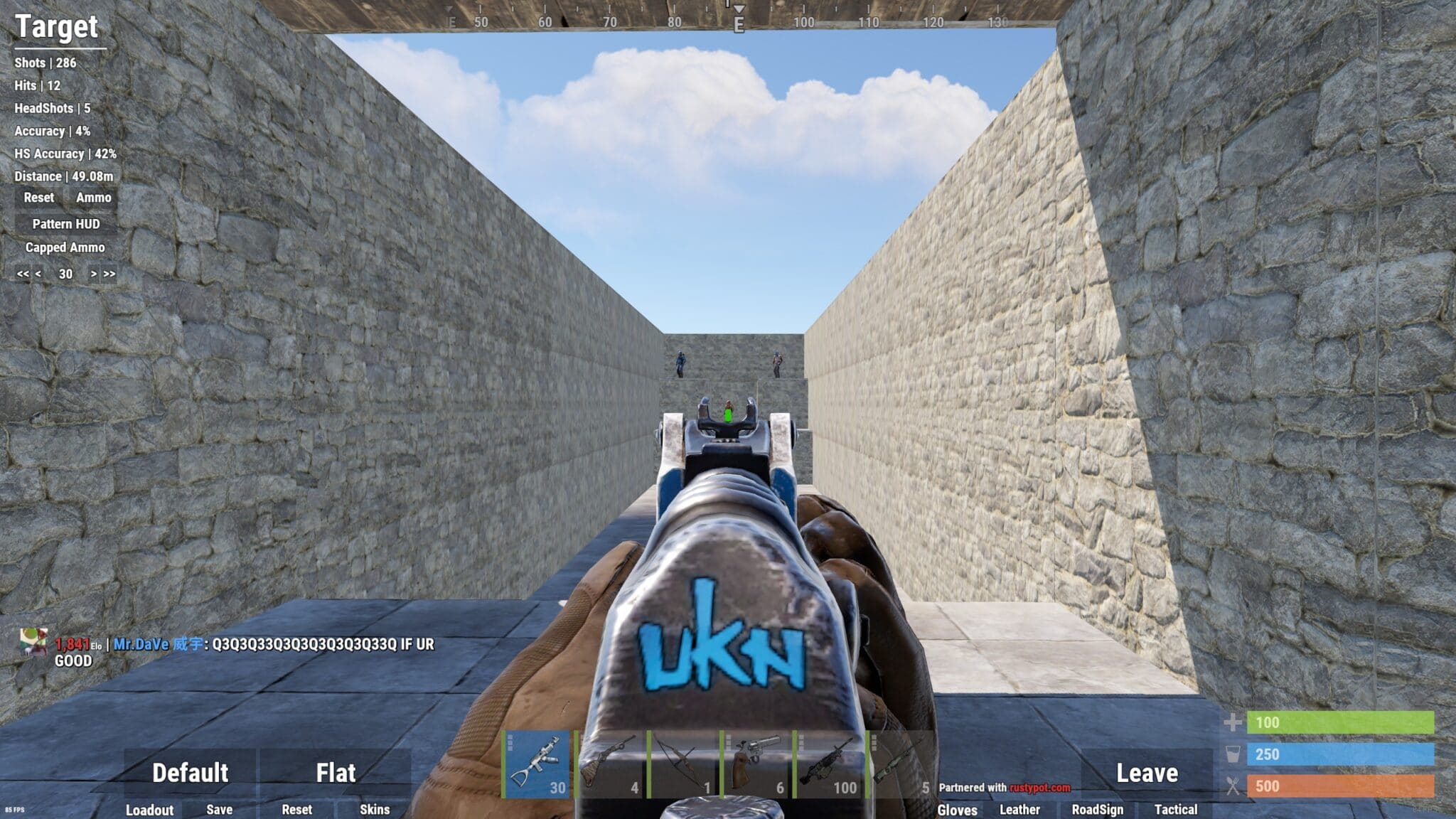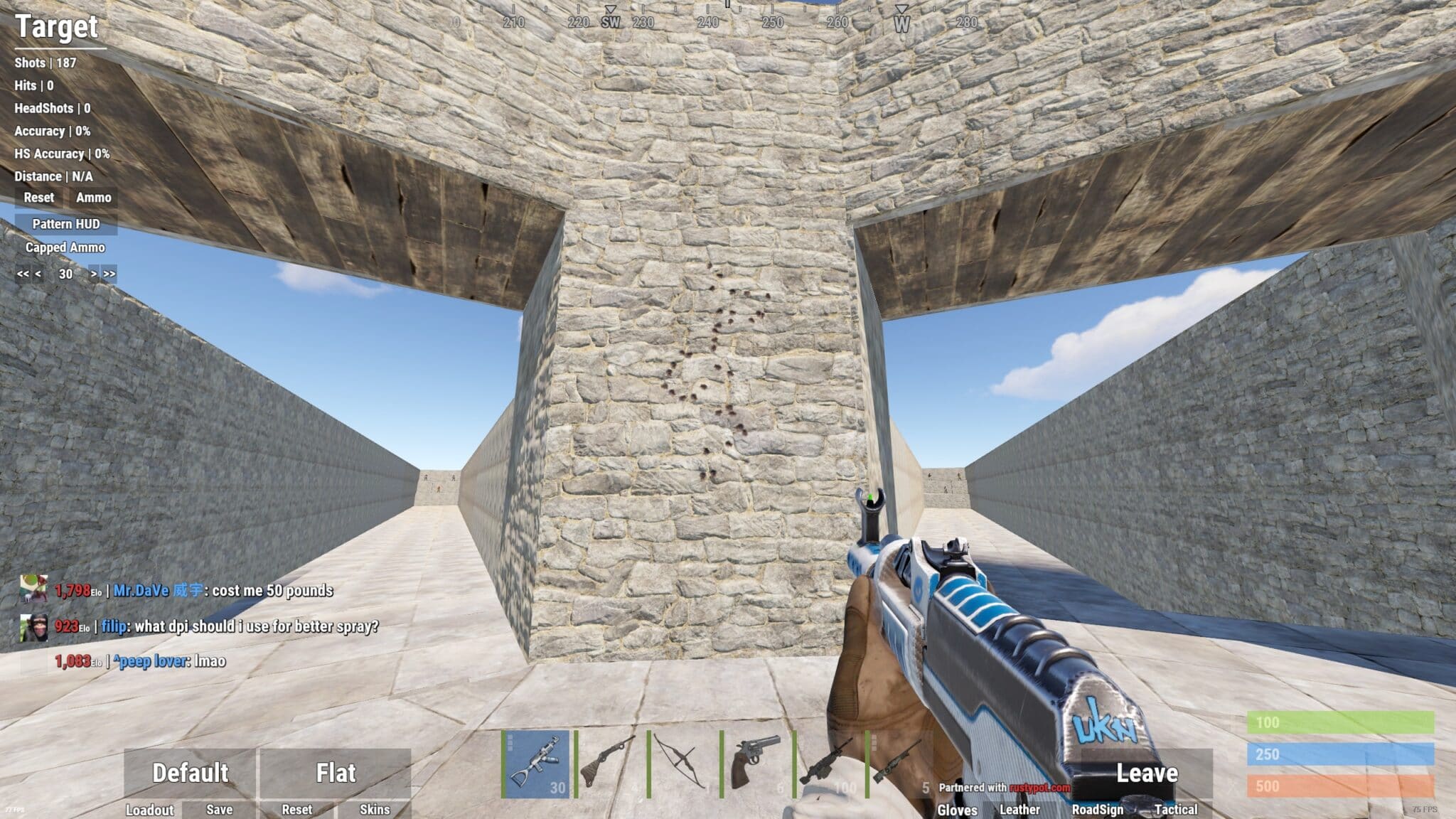Rust is certainly not beginner-friendly. But with our tips, you can get off to a smooth start in the Steam hit in 2022.
Rust is a real perennial hit and can consistently stay in the top 10 of the Steam charts. Facepunch has understood the concept of a live service game and provides its games with fresh content every month. But especially for newcomers, the survival title is merciless, which is why we try to make the start easier for you with our ultimate beginner’s guide 2022.
Table of Contents
1. the right server
Before you even start into the game, you will come across the hundreds and hundreds of servers that greet you in the main menu. Here you should look for the following things:
(~) Modding Server: If your time is limited, you should look for X2 servers where you can get twice as many resources. Because in the vanilla version Rust is pretty grindy and requires a lot of time if you want to compete against other players. However, you should avoid all servers that use a higher multiplier than 2 if you place a lot of value on the survival aspect.
(~) PvE and beginner servers: If you want to get to know all the peculiarities of Rust before you fight against other players, PvE servers might be interesting for you. If you don’t want to do without it completely, there are also compromises on some servers where PvP is only active in certain zones. Please note, however, that on beginner servers there are sometimes players who have more than a thousand hours on the clock.
(~) Team-Limit-Server: On official servers you won’t find a team limit for the most part, which is why you’ll often find 20-man clans on them. In the Community or Modded tab, however, there are also many solo/duo/trio servers. Therefore, especially in the beginning, it is best to choose a server that only allows as many players as you have team members.
(~) Official servers: If you want to experience Rust as the developers intended, these servers are your first choice. Note, however, that the players here are often merciless and you should not hope for much help. Above all, the high number of players makes it extremely difficult for beginners to gain a foothold. Strange but true: It has long been no secret in the community that there are a disproportionate number of cheaters on the official Facepunch servers. It is therefore better to switch to Rustafied or Reddit, which can also be found in the official tab.
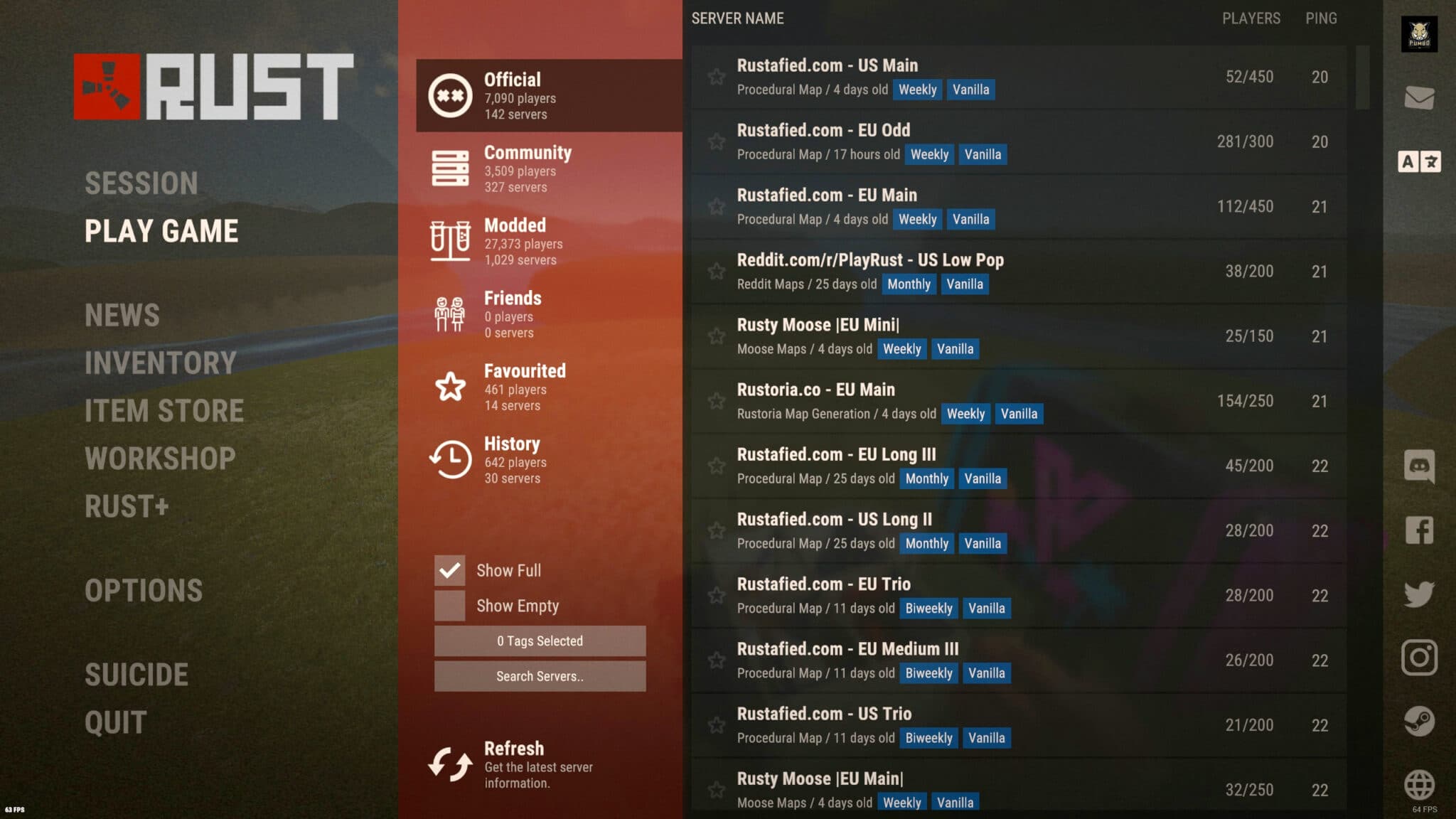
When choosing a server, always make sure that it has an ingame shop. You can usually find this out via their website or Discord. These often sell ingame advantages for real money. Serious servers usually only offer a queue skip. Especially suitable for this is the page (Battlemetrics), where you can find out all the important information about a server. Among other things:
- How big is the map?
- How many players were there last month?
- Website or Discord
- Internal server rules
Server recommendations
Finally, I would like to give you some servers to play on without worry:
(~) Wir Rusten 2.0: Especially good for beginners, with a helpful German community. Also, there are some special rules like predetermined raid times that protect you from not being raided at night while offline. The same applies to PvP, except in monuments. In other words, you can go farming in peace at certain times without fear of being killed by players. Mods and admins are very active and are constantly working to improve the server and work together with the community.
(Discord)
(~) Intoxicated EU Solo/Duo/Trio 2x: This server is only limited to three team members and is therefore perfect for small groups. Intoxicated has been around for years and the server is consistently well attended, which is not a given in Rust. Apart from the double amount of resources, however, there are no other rules, which is why you should bring the usual nerves of steel as a newcomer.
(Discord )
(~) EU] Willjum’s Solo only server: This server is suitable for those of you who want to play alone. The server of the YouTuber Willjum, who is well known in the Rust cosmos, is well moderated and has a lot of players. Except for the team limitation, this server is completely vanilla.
(Discord )
2. where should you build your base?
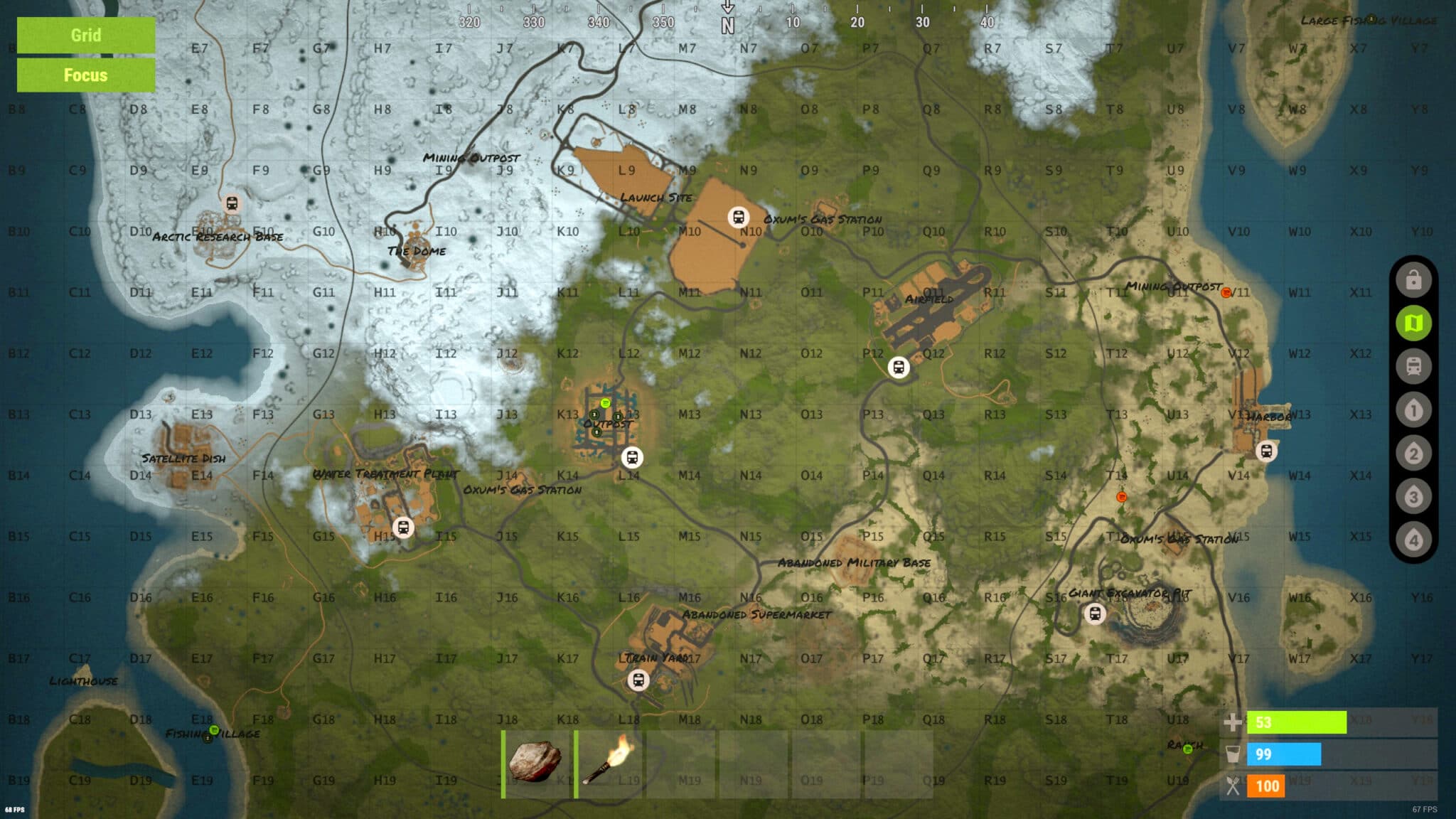
On joining a server, you will wake up naked on a beach, carrying only a rock and a torch. So what goals should you set for yourself first? Look at the map with “G” and decide on a spot where you want to build.
Depending on the server, you should stay away from the large monuments marked on the map at the beginning. However, keep in mind that you should at least have a spot nearby that contains a recycler, as you will need it very often and don’t want to walk too far when you have your bags full of valuable components.
Monuments with a recycler:
- Mining Outpost
- Supermarket
- Launch Site
- Water Treatment
- Airfield
- Power Plant
- Junkyard
- Train Yard
- Bandit Camp (Safezone)
- Outpost (Safezone)
You can also farm components on the street, but you should at least build near one of the monuments, as it farms much faster there. The underground tunnels, which have an entrance at almost every monument and are marked with a white train symbol, are particularly suitable.
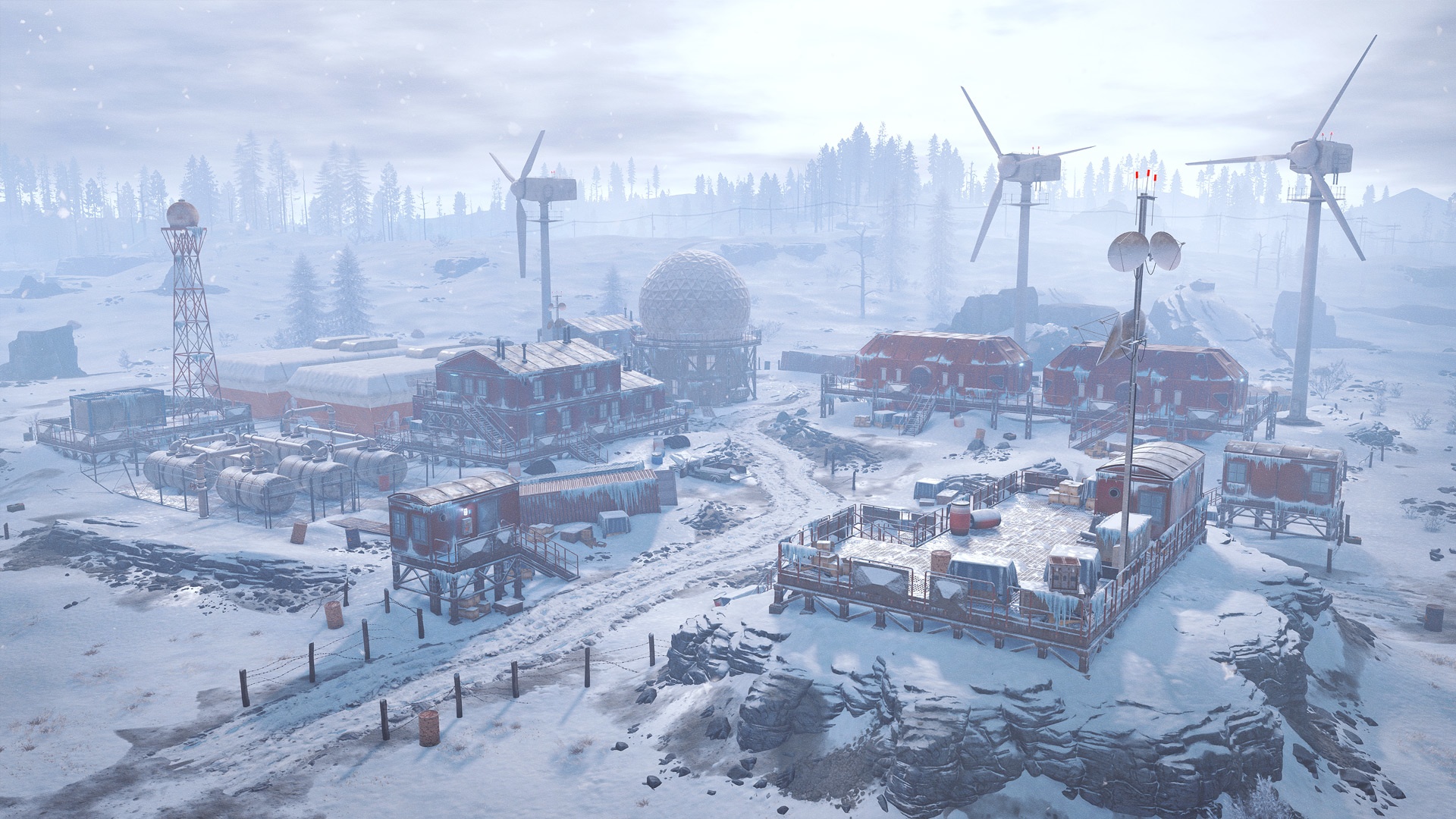
Rust encyclopaedia
(~) Airlock: A specific entrance with two doors that prevents enemies from entering your base.
(~) Blueprints: In order to craft items in Rust, you will need the blueprint of an item in most cases. You can either learn this by researching the respective item and sacrificing it, or you can use the workbench and work your way through the tech tree.
(~) Bunker: An entrance that you close with a wall instead of a door.
(~) Honeycomb: A protective layer around the core of your base.
(~) Monuments: The marked points on your map are called monuments. In most cases, there is more loot in one spot, but they are also more fought over.
(~) Safezone: There are several zones in Rust where other players cannot damage you. The most important are the Bandit Camp and the Outpost, where you can recycle undisturbed and buy resources and items in shops.
(~) Tool Cupboard: The heart of your base. This cupboard ensures that no one else can build in your area and is taken care of by set up traps.
(~) Wipe: On the first Thursday of each month at the latest, all servers in Rust are reset. With a map wipe, only a new map is installed on the server. A force wipe will also reset any blueprints you have learned. Most servers will wipe the entire map once a week and the map plus blueprints every fortnight or once a month.
(~) Workbench: There are three workbenches that allow you to craft different items. To be able to make the most valuable items, you need Workbench Level 3. Blueprints can also be learned through the Tech Tree.
3. the perfect start
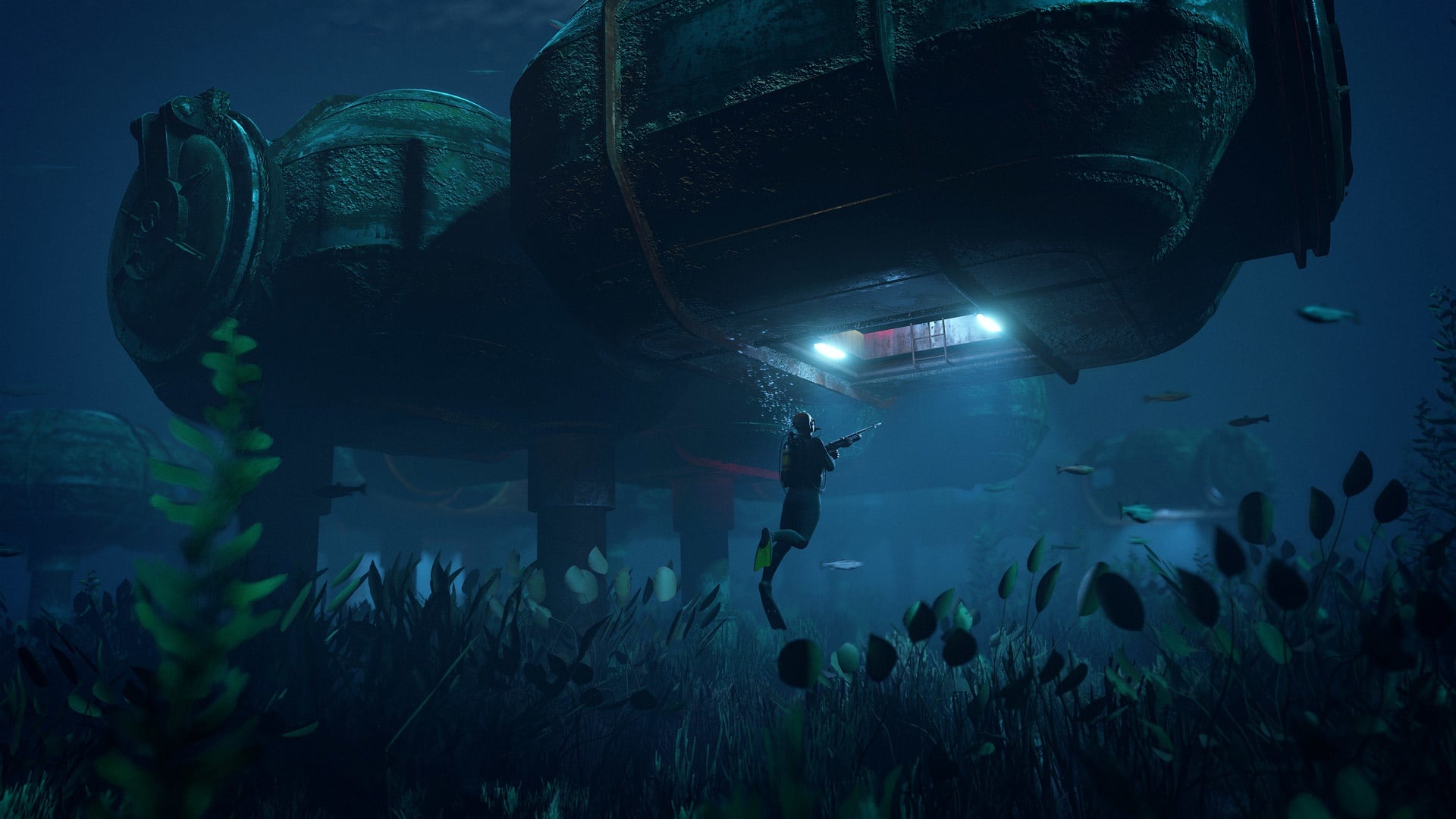
First try to mine a stone vein and cut down a tree to be able to build tools via the crafting menu with the Q key. Also look out for the many hemp plants, which will give you cloth so you can build your first weapon – the bow – and sleeping bags so that if you die you don’t have to run from the beach again. Sleeping bags and beds will let you respawn in Rust at the placed location. Now there are two prominent ways you can start your adventure from here.
Either you run directly to the spot where you want to build and pick up everything you come across. Or you can make your way to the outpost, where you can buy things to make your start easier.
Farm some stone veins, barrels and crates on the way to the outpost and preferably kill a wolf or a bear. But be careful: Bears in particular do an incredible amount of damage in Rust and will send you into nirvana with just a few blows. If you are being chased by an animal, you can either build a wooden foundation or jump onto a raised object so that the animals run away.
Place a sleeping bag in front of the outpost and enter it. Once inside the outpost, the first thing you do is exchange stone for wood. Just a few stone veins are enough to fill an entire inventory with wood.
Use it to build a tool cupboard and two single doors. If you have enough cloth or leather from animals, you should make clothes so that you can absorb more damage. If you have also found ropes in the barrels, you should make a crossbow and a nailgun.
This combo is incredibly powerful, especially at the beginning. First try to hit an enemy with a crossbow and then push him with your nailgun and land some more quick hits to finish him off.
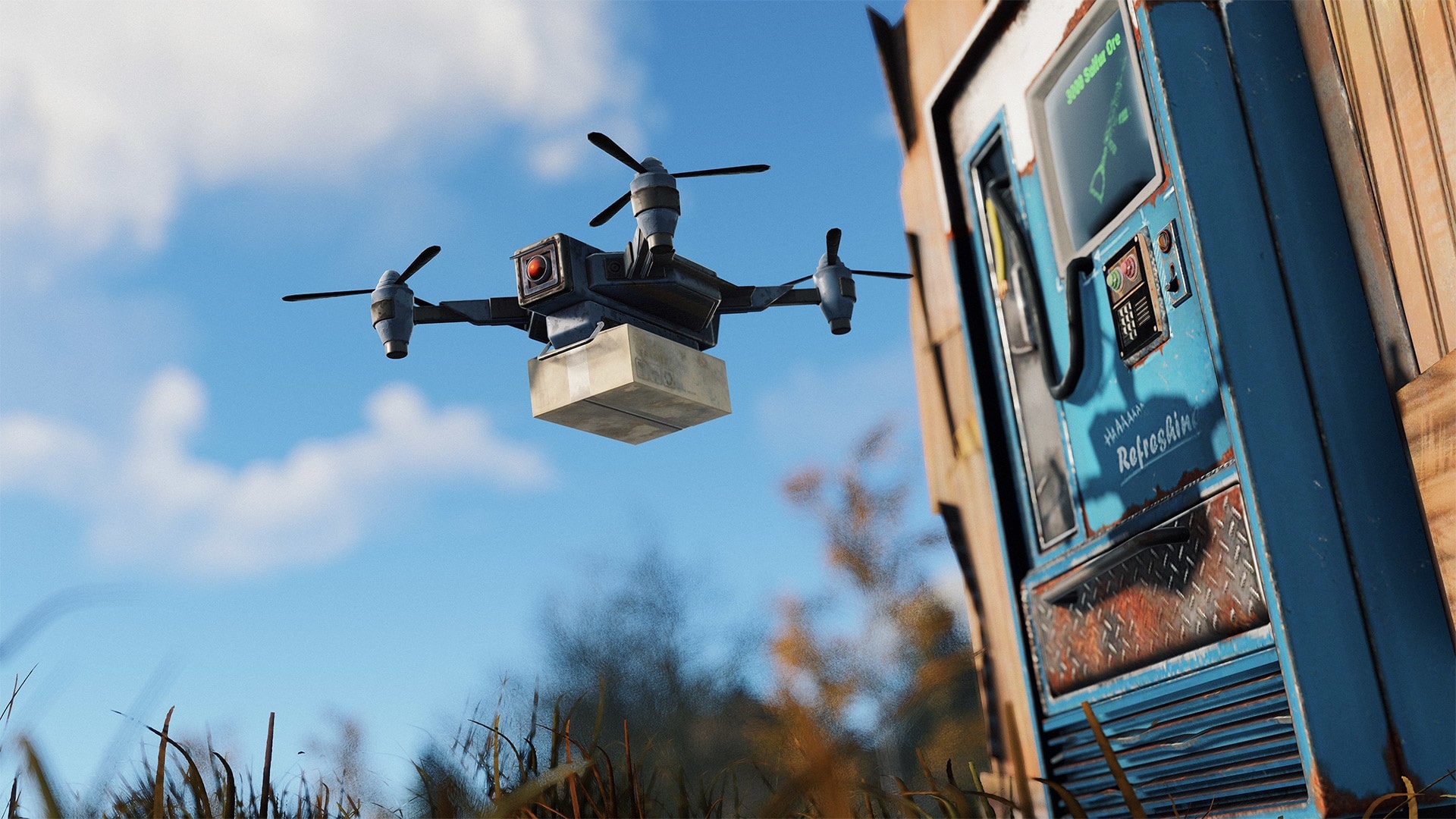
Now all that’s missing is a base. If you want to be on the safe side, you can call up the console with F1 and enter kill. Everything you have in your bag will stay in the outpost for at least 20-30 minutes before it disappears. As the outpost is a safe zone, no one else can loot your stuff. Now spawn in your bag, which is near the outpost, loot the Tool Cupboard, the doors, wood and stone and build a blueprint and a hammer. Leave the rest there in safety.
Now run to your desired spot and build a base where you place the tool cupboard and insert the doors. If you are killed by players during this attempt, you have at least not lost everything and can return to your backpack in the outpost. Once you’ve made it through in one piece, you can retrieve whatever is left in the outpost and stash it in your now safe first base.
4. build small and efficiently
In Rust, it’s not about winning a beauty contest. Stow crates, workbenches and everything else in the smallest possible space. Because the bigger you build the interior, the more expensive it will be to erect protective walls (honeycomb) around your base. However, these are bitterly necessary if you don’t want to be raided immediately. A starter base therefore usually consists of a 2×1 or a 2×2 grid.
First improve your foundations, then the walls and finally the roofs. By the way: Never use the right roofs but floors as roofs, otherwise you won’t be able to add any more floors to your base. Now place the tool cupboard in the last room, as far to the edge as possible. Before you log out for the first time, you should do everything you can to upgrade the core of your base to at least stone and insert metal doors. Wooden walls and doors can be destroyed in no time without raid materials.
Once you have survived for a while and collected enough resources, you can decide to expand your base or build a main base nearby.
5. use air-locks, half-walls and bunker entrances
Airlocks are a triangular foundation that you place in front of your entrance. Equip it with walls and single door frames. Now place the outer door so that it opens inwards and the inner door so that it opens outwards. This has the advantage that no one can run into your base if they have killed you in the entrance and you can also fire out through the resulting slit without other players getting to your inventory.
By the way, you should also make use of half walls to build loot rooms and store more crates. To do this, place a half-wall and put a floor on it. Now run to the room next door and you can place a floor in the middle of the room to be able to place two big crates on top and two on the bottom.
Bunkers are called entrances in Rust for which you use walls instead of doors. This takes advantage of the game’s stability mechanics. There are different types of bunkers, which I present to you in the following pictures. The advantage is obvious. As soon as you log out, other players have to destroy not only doors but also a wall, which costs many times more. Since in Rust, especially on small group servers, you are mostly only raided when you are offline, you should do everything you can to expand your base as much as possible.
Important: Always place a sleeping bag inside the base, have enough stone and wood in the core and never upgrade the wooden wall to stone, because then the bunker won’t open anymore.
If you want to learn in detail how to build the bunker systems, I’ll give you some Rust-YouTubers on the way, who are known for their great builds. Don’t be afraid to use popular builds, as an experienced Rust player can guess where your tool cupboard and thus the core of your base is anyway.
6.How does the crafting system work?
In most cases you have to find and learn an item before you can craft it yourself. To do this, you need a Research Table and the required amount of scrap, which is displayed as soon as you place the item in the Research Table.
Alternatively, you can also use the tech tree of a workbench. The disadvantage of this is that you have to learn all items that come before your desired item.
In Rust there are four levels for items.
(~) Level 0: Items like the bow can be built at any time without a workbench and do not require a blueprint.
(~) Level 1, 2 and 3: These items can only be built if you are directly in front of the respective workbench and have already learned the blueprint for it.
7. where to get resources efficiently
Resources: Materials such as stone, metal and sulphur are most likely to be found on cliffs and rock formations. The snow biome is particularly full of veins of rock, which is why many players set up their bases there. But be careful: On the one hand, you will have to deal with the cold debuff, on the other hand, bases will be targeted by other players because it is automatically assumed that a base in the snow could contain many resources.
Scrap and components: Meanwhile, there are umpteen ways to get scrap and components in Rust. While you can run down the road while hammering barrels and looting crates, it’s much quicker to venture to the monuments. These are usually full of different types of crates and also always have a map puzzle for you to solve.
The official Rustafied site has created a nice step-by-step guide for all the monuments and shows you where to get green, blue and red cards. Note, however, that you either have enough clothes or a radiation suit. Otherwise you will slowly but steadily die from radiation in the monuments.
You can also visit the underwater labs, the sea and the underground tunnels if you want to take it easy. The latter has also become a community favourite for getting lots of junk in a short time.
8. Train the basics on certain servers
In Rust there are all kinds of servers that are only there to train your skills. You should visit these often, especially in the beginning, as they are great practice for getting to grips with the difficult firing patterns of the weapons.
(~) UKN: On this server you can train your weapon skills. There are various exercises to choose from. You can shoot at moving or stationary targets. Against real players or only against NPCs. Nice: You can activate the recoil pattern and see how accurately you are shooting with which weapon. Five to ten minutes on this server to warm up will work wonders.
(Discord)
(~) Builders Sanctuary: Here you have an infinite amount of resources and can try your hand at building bases without worry. You can even save them and retrieve them as soon as you join the server again. Practice certain builds and tree mechanics here before trying them out on a live server.
(Discord)
(~) KoalaKopters: There is a golden rule in Rust. You will almost certainly send the first minicopter straight to the ground. But since they cost a lot of scrap, you should start learning how to control the minicopters at some point. It’s a good thing that there’s a server for this, too, where you can destroy one helicopter after the other without worrying.
(Discord)
Finally, I recommend the website (RustLabs). There you can search for all items that are available in Rust. You can also see how many materials are needed to destroy a stone wall, for example. RustLabs is therefore worth its weight in gold, especially for beginners.
I know, that was quite a lot at once. The problem is that this was by no means everything and only scratched the surface. If you are interested in more tips for beginners or advanced learners, feel free to write us in the comments!

